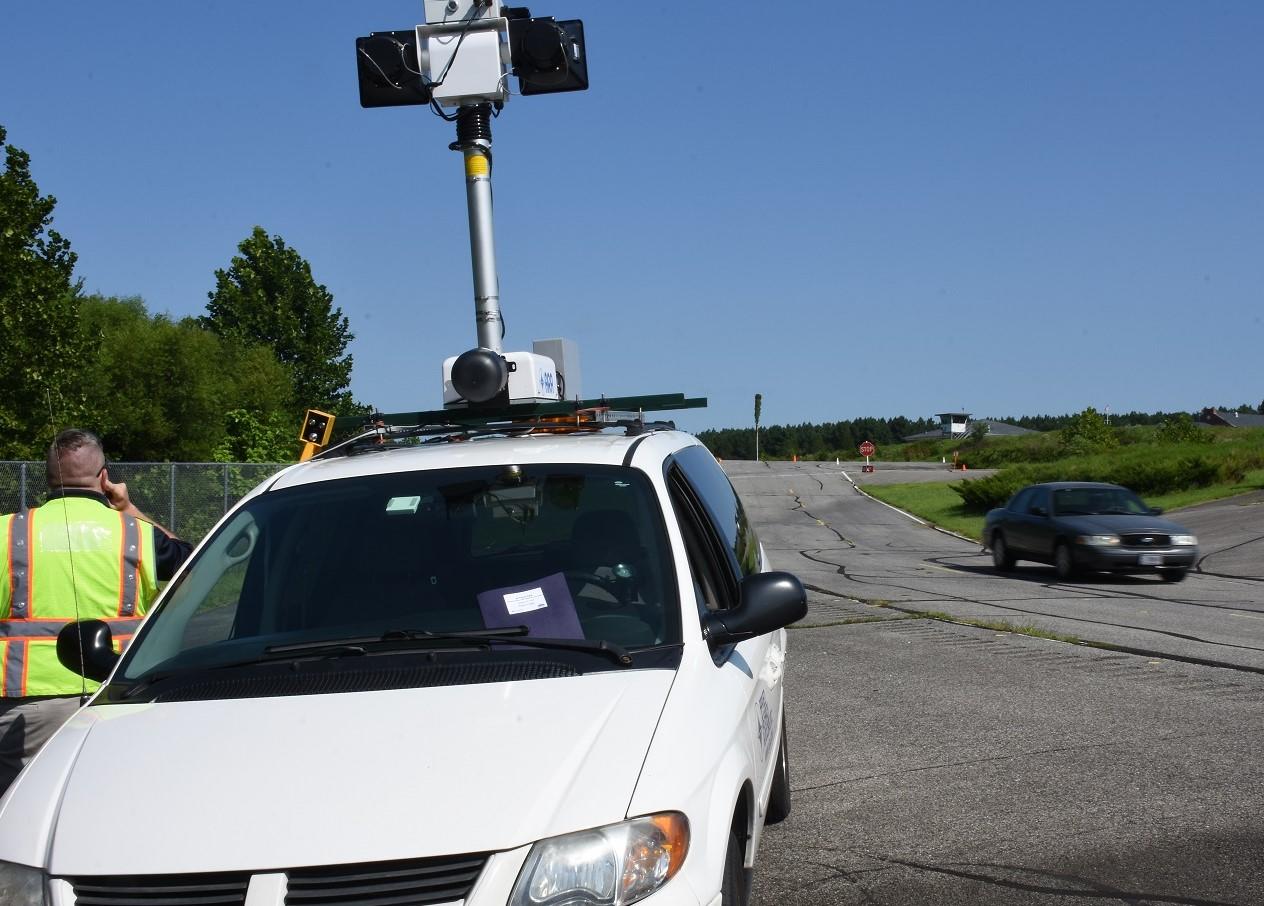
The Department of Homeland Security Science and Technology Directorate (S&T) introduced new technology designed to protect first responders at incident scenes by alerting them to potentially hazardous motorists.
The Automated Driver and Responder Alert System (ADRAS) has two main components consisting of a vehicle-mounted mast with loudspeakers, a radar system, cameras, and a siren, as well as the American National Standards Institute-standard safety vest. It detects the speed of oncoming vehicles and, at a miles-per-hour threshold set by responders at the scene, triggers an audible alert. When vehicles do not heed the alert to slow down or move over, the vest illuminates, flashes and vibrates so responders can escape harm.
“When I ride at night, that’s probably the most dangerous time to be an EMT, because you have limited visibility and because drivers don’t see you that well, I’ve come very close to getting hit,” said Margaret Fowke, volunteer emergency medical technician with the Silver Spring (Maryland) Fire Department. “When I found out about ADRAS, I thought ‘this is really going to be the answer.’ It has the potential to save a lot of lives.”
S&T, which officials said recently field-tested the technology with first responders at the Federal Law Enforcement Training Center in Cheltenham, Maryland, partnered with Applied Research Associates, Inc., to develop ADRAS, using auditory cues and projected warning messages tailored by responders to warn approaching motorists to slow down.
“We have all been on the road and driven by response vehicles at a traffic stop or tending to an accident scene and have witnessed the confusion and danger posed by these scenarios, both for the first responders and the traffic passing the incident,” S&T’s Angela Ervin, ADRAS program manager, said. “Even if ADRAS alerts and warnings save just one life, the technology will be a complete success.”




